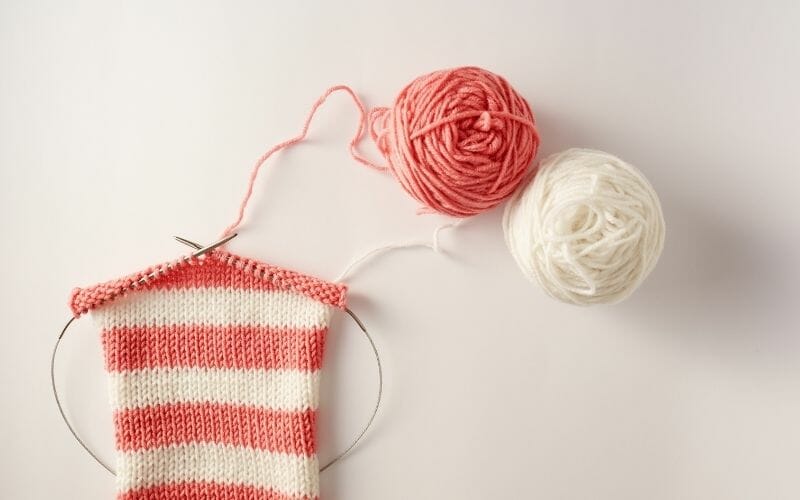You are happily
If you love engaging in

Fixing Mistakes in Circular Knitting

Circular
Consider the following two common knitting mistakes and how to correct them:
a.) How to Fix a Hole in Knitting .

In circular
b.) How to Fix the Beginning of the Round

One of the most common
It is relatively easy to find the beginning of the round. The first thing you should do is find the tail of the scrap yarn at the edge of the cast-on. Then, look for the place where the tail meets the edge. From the edge, trace the path followed by the column of stitches up to the current row. When you find your current row, you will have found the very first stick of the round.
To ensure that you don’t lose the current row again, place a marker between the first and the last stitch. You can also double-check the current row by tracing back the sticks and looking at the most currently knit stitches.
Read our recommended knitting needle guide to know more about it.
Fixing Basic Knitting Mistakes

The most basic
Also, for future reference, note that you can start
The following are more specifications and guidelines for fixing basic
- Unknitting – With this laddering-down method, undo every new stitch; the new stitches should be undone from the right needle. Then, return the old stitches to the other needle, that is, the left needle.
- Use a needle with a smaller gauge – The needle is used to rip out rows in your knitting project and pick up one loop in each stitch. Remember to use a needle with smaller gauges compared to the one you are using to knit.
- Use a large loop – The loop is used for picking dropped edge stitches. The loop should not only extend from the edge located just above a smaller loop, but the knitted edge should also be well intact.
- Pay attention to the needle’s stitch orientation – Tracing the stitch orientation can help you fix any twisted stitches and prevent more mistakes.
Check this guide to learn use of circular knitting needles for blanket.
Knitting 101: How to Fix Common Knitting Mistakes

The following points highlight two common
1.) Forgetting the Direction you were Going
At times, you may be forced to stop your
2.) Very Tight Stitches
Very tight stitches have a disadvantage in that they are usually tough to move up the needle. The key to fixing very tight stitches is understanding the reasons for the high
- Using the needle’s tapered part to make the stitches – To fix the knitting error, push the stitches back such that they are at the broadest part of the needle. Do this every time you are making a new stitch.
- Tugging on your yarn – Instead of tugging on your yarn, hold it loosely to avoid tightening the stitches as you knit. When making new stitches, lift the right-hand needle gently, such that it is slightly bigger.
- Holding the yarn tension very tightly – When holding the yarn, find the most comfortable tension. Alternatively, hold the yarn a little more loosely and gently in your palm.
Tools to Help You Fix Knitting Mistakes

To fix any
- Crotchet hooks
- Waste yarn
- Stitch markers
- Small-double pointed needles
- Tapestry needles
Post you may also like: How to fix crochet mistakes?
Conclusion
Knitting is an enjoyable activity. Yet, it is much more fun and exciting when you can correct your
Source:

